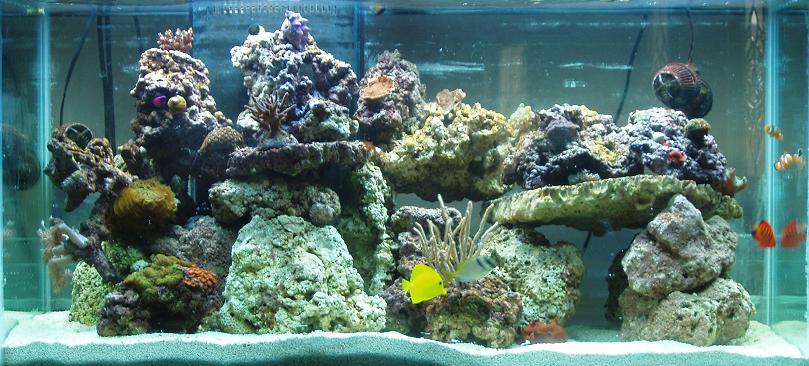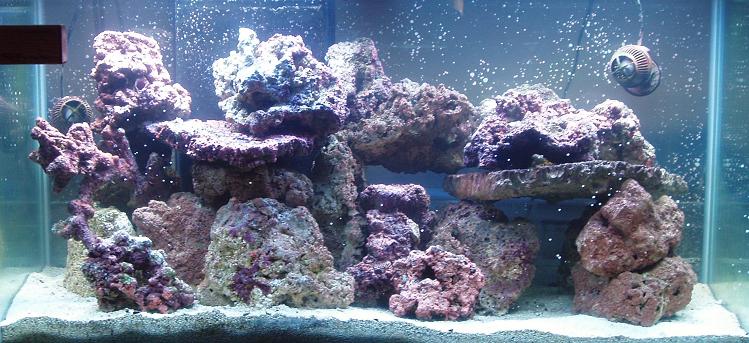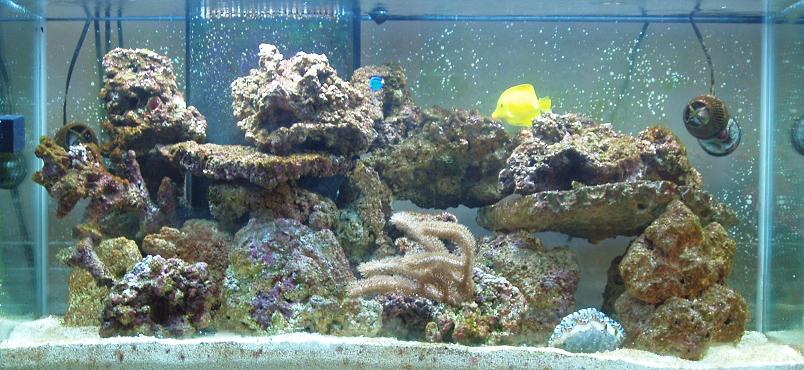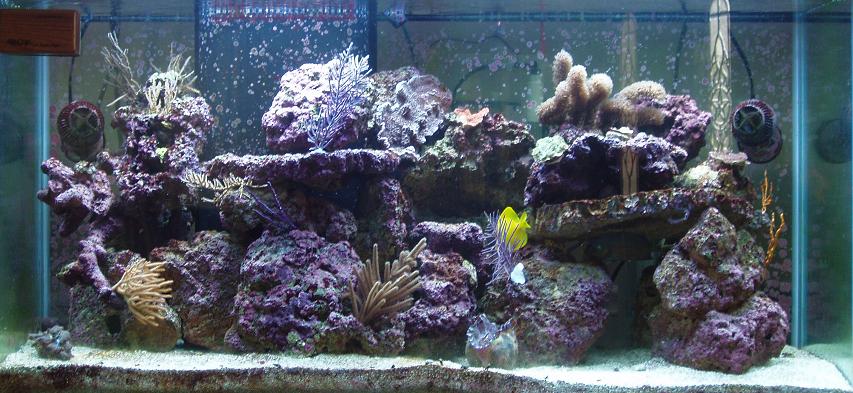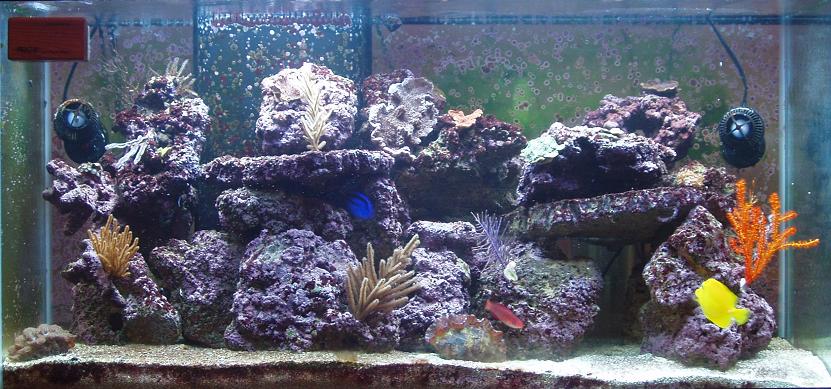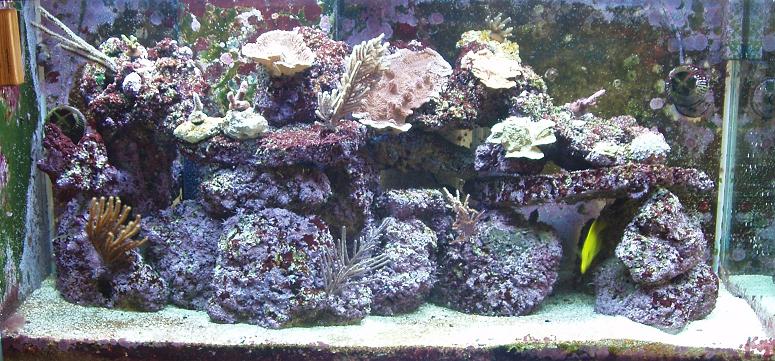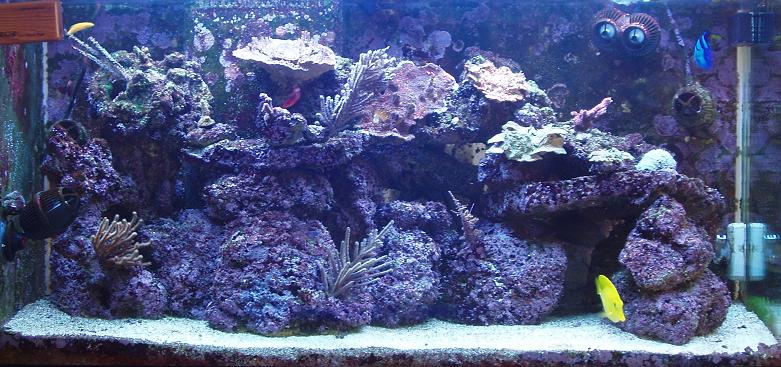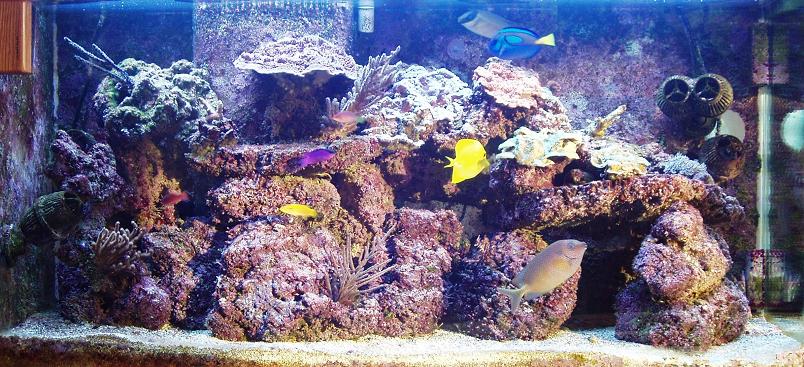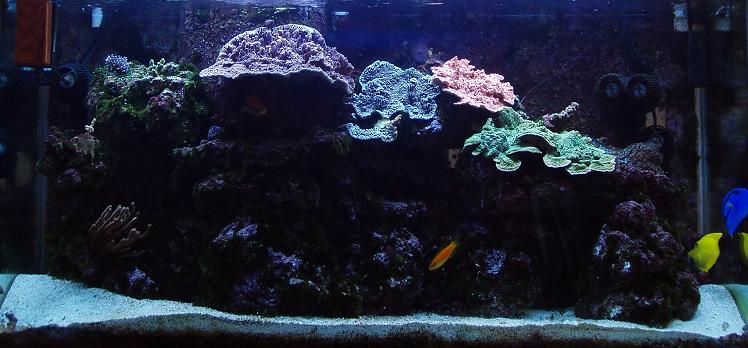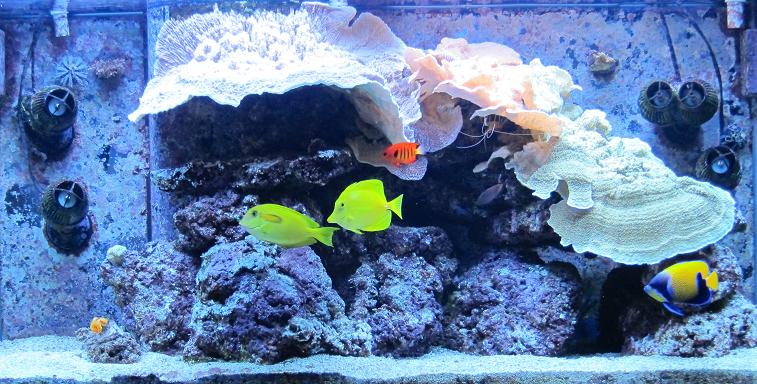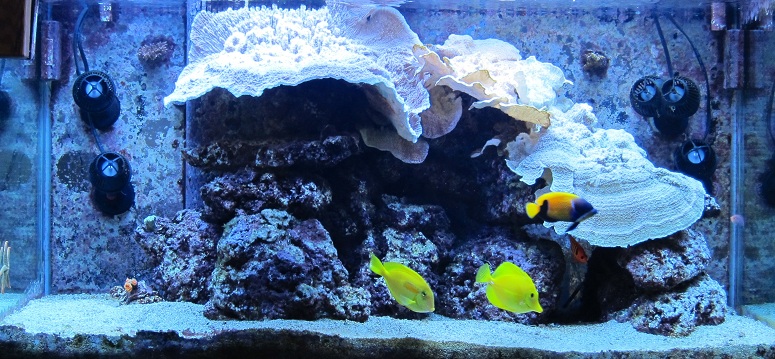This snapshot was taken almost 10 months after the previous. I had become extremely busy with my final year of
University and the tank had suffered because of it. I removed my Orange Spot Rabbitfish, as it had become too large.
The Blue Hippo Tang had very mysteriously disappeared, and I never found any of its remains. In their stead, I
introduced a Majestic Angelfish, a Flame Angelfish, an Eibli Angelfish, and an Orange Shoulder Tang. Once again this
was a lot of fish for the size of the tank.
The Monticaps had grown very large, but had lost some of their color. I suspect this was due to the high bio-load.
The Green Apple Monticap, in particular, had begun to encrust over the ORA Red Planet Acropora forcing me to move
the latter. In the above picture, it is magnetically attached to the back panel in the top-right.
Because of the size of the fish in the tank, I had removed some of the live-rock on the left. I felt that this would
give the fish more area to move around in. However, it took almost a month for the fish to become comfortable with
the change and begin utilizing the open area!
By now, the refugium had become dominated by Caulerpa. I had actually removed the last clump of Chaetomorpha because
it was coated in coralline algae. On the bright side, having so much Caulerpa appeared to make my Splendid Mandarin
more comfortable with being out in the open. I'm not sure if it actually preferred Caulerpa over Chaetomorpha, or if
the change in behavior was just a coincidence.
|
